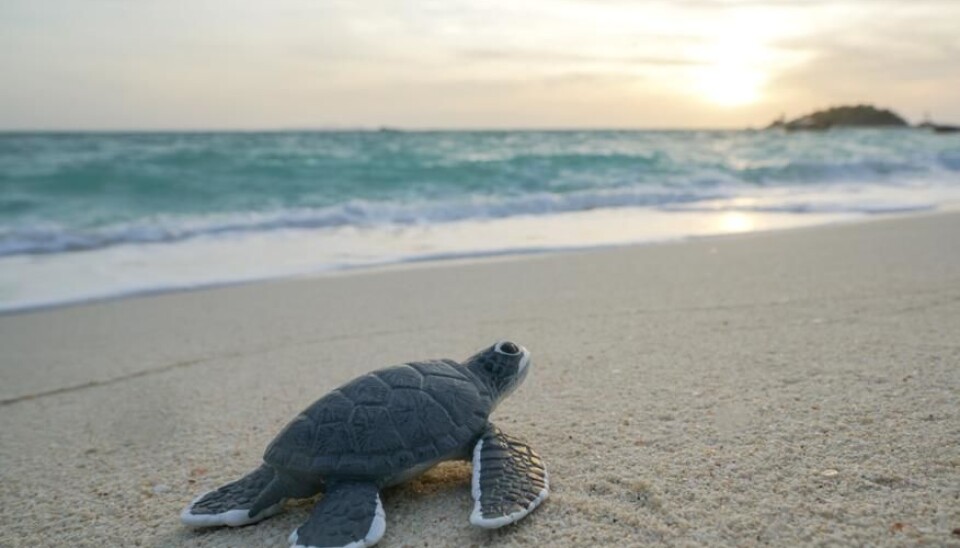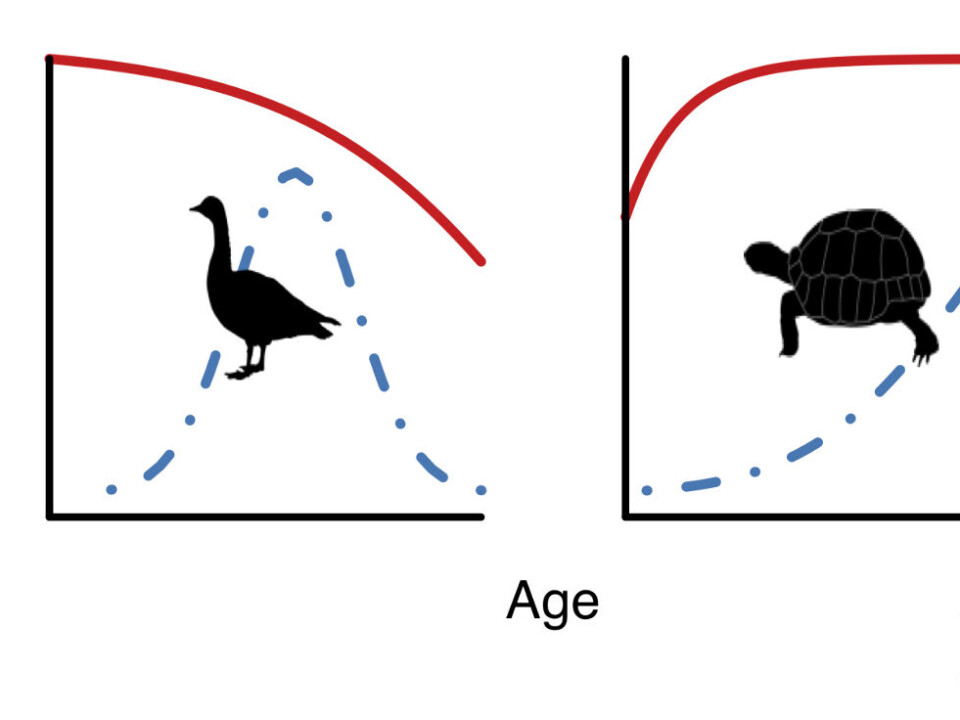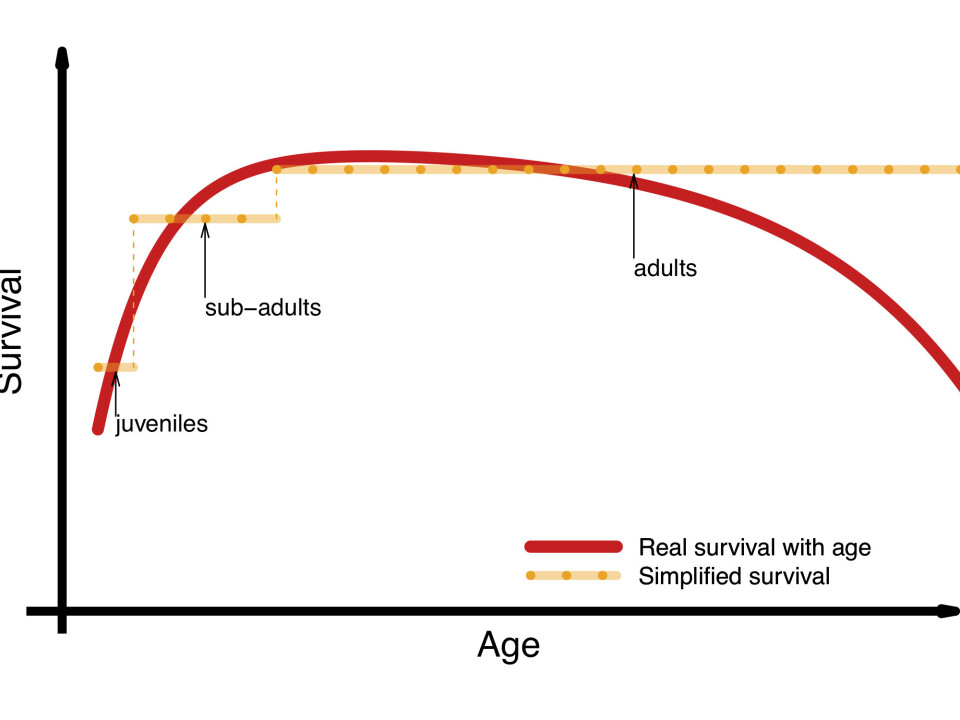
Mathematical models can predict animals’ risk of extinction
It’s not easy to predict whether a species will die out. However, scientists from Syddansk Universitet are on the case using statistics to save endangered animals.
Can we predict the extinction of endangered species? In short: yes – and we can achieve this by using mathematical models as our windows into the future.
Such models can help us foresee how a population will react to changes in its environment and with what probability it may die out.
However, just as with a building, the accuracy in the information we use as the foundation of the models is crucial to improving our chances of predicting the fate of populations in nature. In a recent study, we have found that these models are often too simple – and this can have serious consequences.
We will return to our study. First, let us look into what it means to use math and statistics to predict species extinction.
Math to the rescue

Today, we are witnessing one of the greatest extinction crises since life began on our planet.
Ultimately, a species’ risk of extinction depends on how many individuals in its population are able to reproduce and how long they can survive.
In order to create and propose management programs to improve a species’ chances of surviving, it is essential to understand how survival and reproduction change within a population and the factors that affect them.
Mathematical and statistical models have become fundamental tools to predict how species demographic rates can react to their environment, and thus how they can cope with increasingly changing conditions.

But their ability to let us see into the future depends on the accuracy of the information we use to construct them.
Climate change is increasing the risk of extinction
Today, we know that both survival and reproduction vary with age as part of the natural ageing process, and that each species has a very particular trend in these age-specific demographic rates (Fig. 1).
For instance, as we show in figure 1, survival in deer is somewhat high for newborns and juveniles, it increases as individuals reach sexual maturity and then slowly declines as individuals become older.
Reproduction follows a fairly similar pattern, where reproduction for young adults is low, it increases as individuals become more experienced, and then it declines as they become older. Turtles and tortoises, on the other hand, have both increased chances of survival and reproduction as they grow older, which is a typical trend for organisms that keep growing in size as they age.
On the other hand, we also know that these demographic rates vary every year in response to changes in environmental conditions such as the availability of food and water, the amount of rain, or how dry the habitat becomes.
Worryingly, we know that climate change is not only increasing global temperatures, but it is also increasing the variability of these environmental conditions, exacerbating the risk of extinction of a vast number of endangered species.
To foresee whether a population might go extinct, we need to predict how these variable environments will affect its demographic rates and, as a result, how much the number of individuals in the population will change every year.
We achieve this by means of mathematical models that take the age-specific demographic rates of the population as we known them, and ‘shock’ them in the same way the environment does.
Thus, these models can reproduce the random nature of the environment and, by running them many times, we can calculate what percentage of the simulated populations will go extinct, and how long it takes them to die out.
We have to get the models right to make good predictions
However, in our recent study we found that oversimplifying the information we use to construct these models can greatly distort our predictions, to the extent that we can predict that a population may never die out when, in reality, it is doomed to extinction.
For instance, until recently researchers and wildlife managers assumed that it was enough to represent a population’s demographic rates as constant with age for general age groups such as juveniles, sub-adults and adults (Fig. 2) when predicting how populations changed under natural environmental conditions.
However, in our study we showed that this reduction into general age classes could greatly distort predicted population growth rates and thus our understanding of the population’s chances of avoiding extinction.
Why? Because grouping into general age classes can give the illusion that a population’s chances of extinction are slim when in reality it will go extinct at great speed.
This is because such artificial grouping changes the influence of the survival and reproduction of each age. For example, in Figure 2 we can see that, in the simplified survival all adults contribute equally to survival, when in reality the younger adults should contribute much more than the older ones.
As we show in our study, this effect of grouping ages can greatly distort predicted population growth rates and thus our understanding of the population’s chances of avoiding extinction.
We have the means to save endangered species – let’s use them
In addition, today we know that individuals often have limited resources which they can allocate either to survival or to reproduction. This results in trade-offs between these two demographic rates. The result of these trade-offs is that a good year for reproduction may translate into a bad year for survival and vice-versa.
In our study, we find that ignoring these trade-offs between survival and reproduction can further reduce our ability to predict the fate of wild populations.
Surprisingly, and despite the increasing evidence of trade-offs between survival and reproduction in natural populations, models tend to ignore them.
Ignoring these seemingly minor issues can greatly affect our ability to predict the fate of populations in their natural environment, and therefore our capacity to anticipate the potentially negative effects of global problems such as climate change, introduction of exotic species, or habitat loss.
With a pinch of more realism in our predictive models we can trust them as a window into the future. There is still hope for many endangered species, and we should apply all the tools in our grasp to ensure that we can stop the extinction crisis.
Read this article in Danish at our sistersite Forskerzonen





